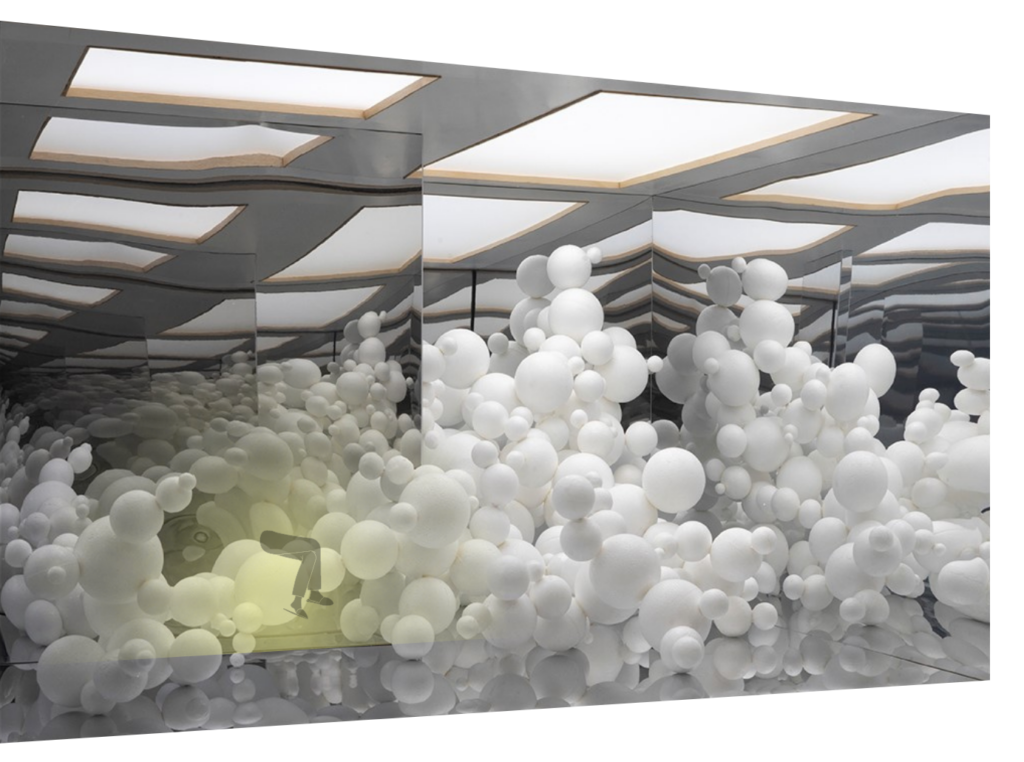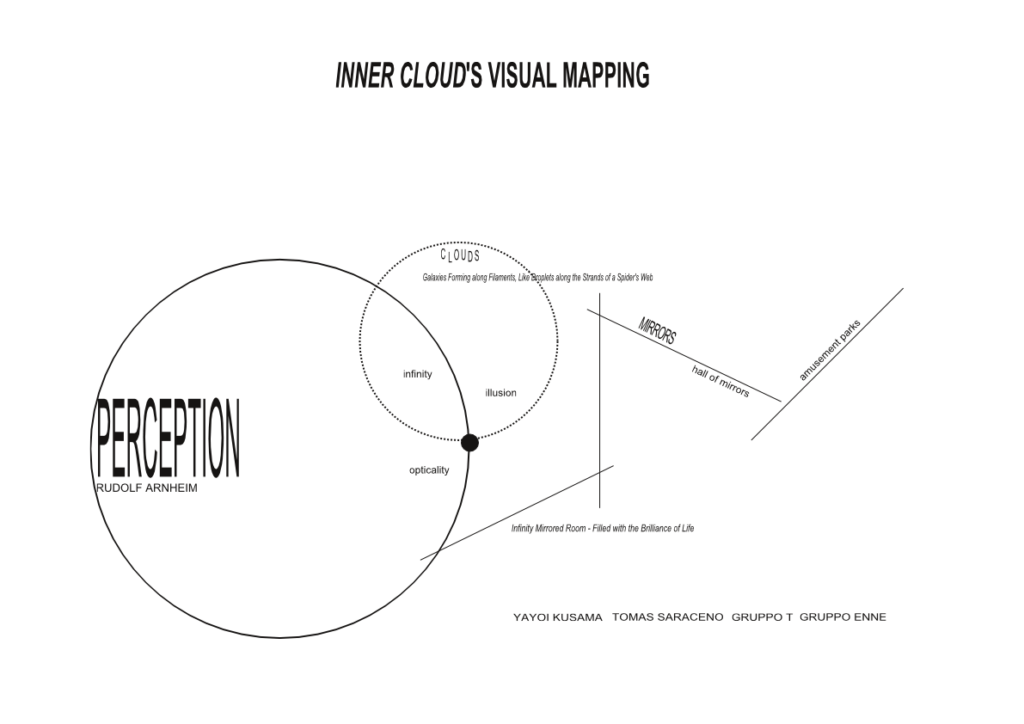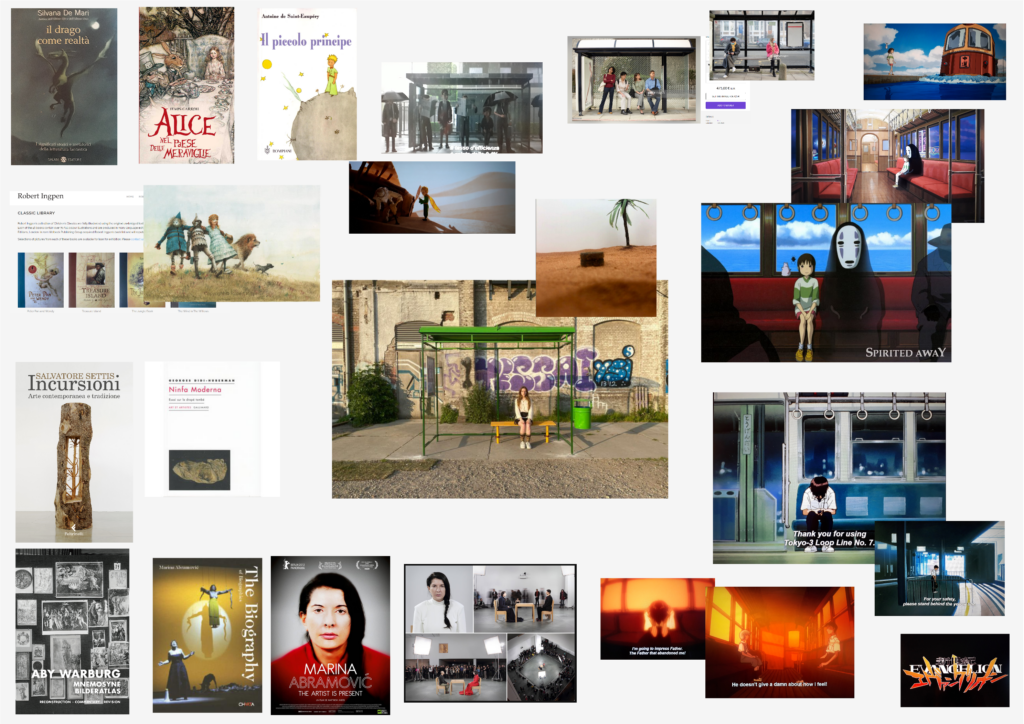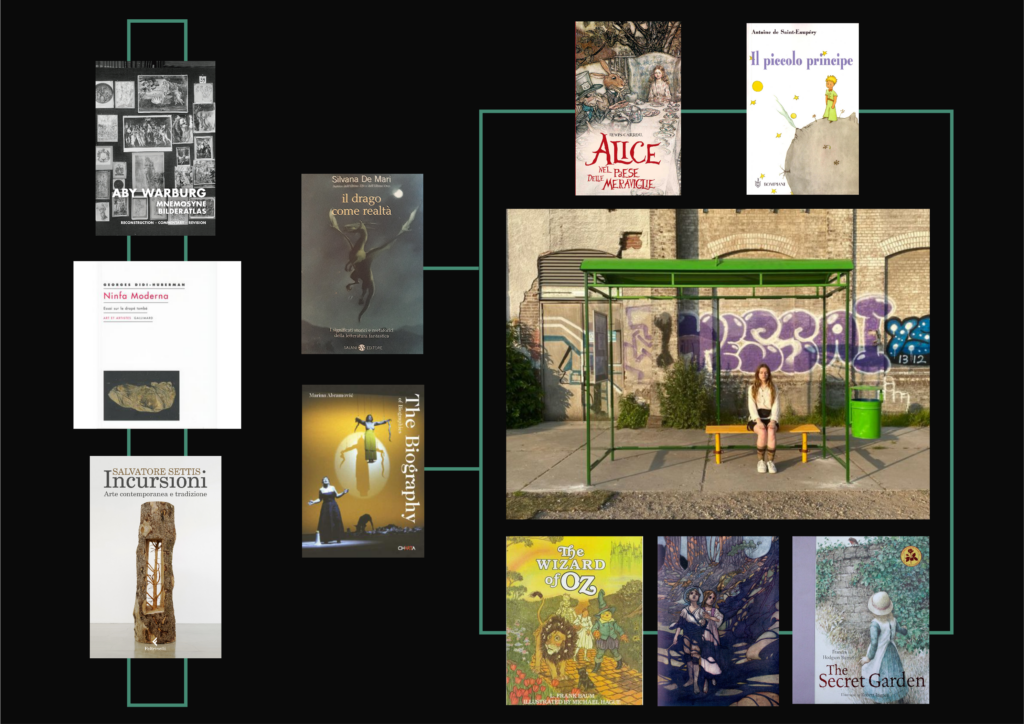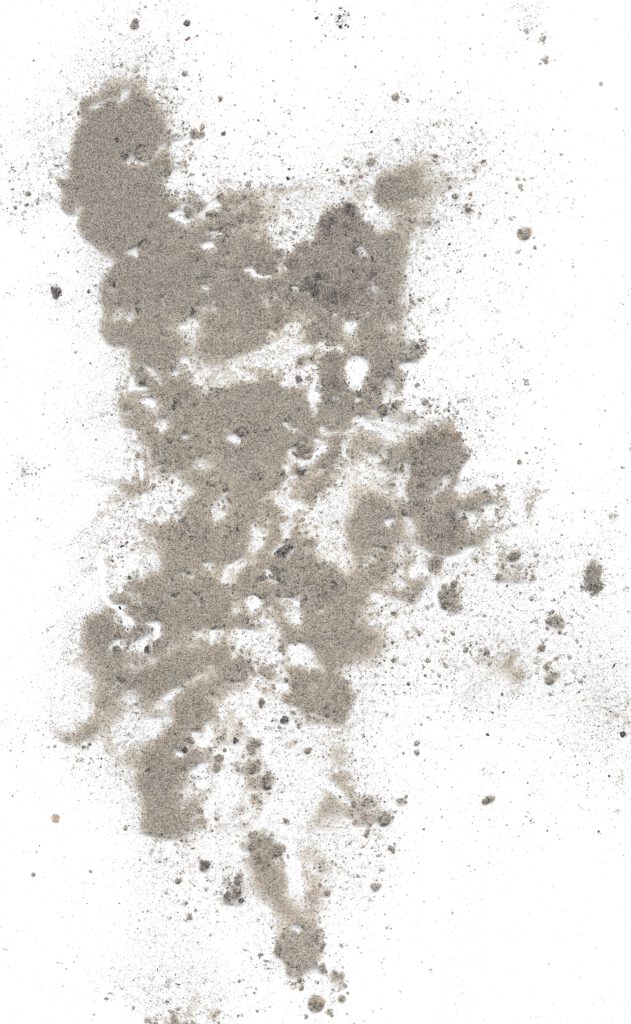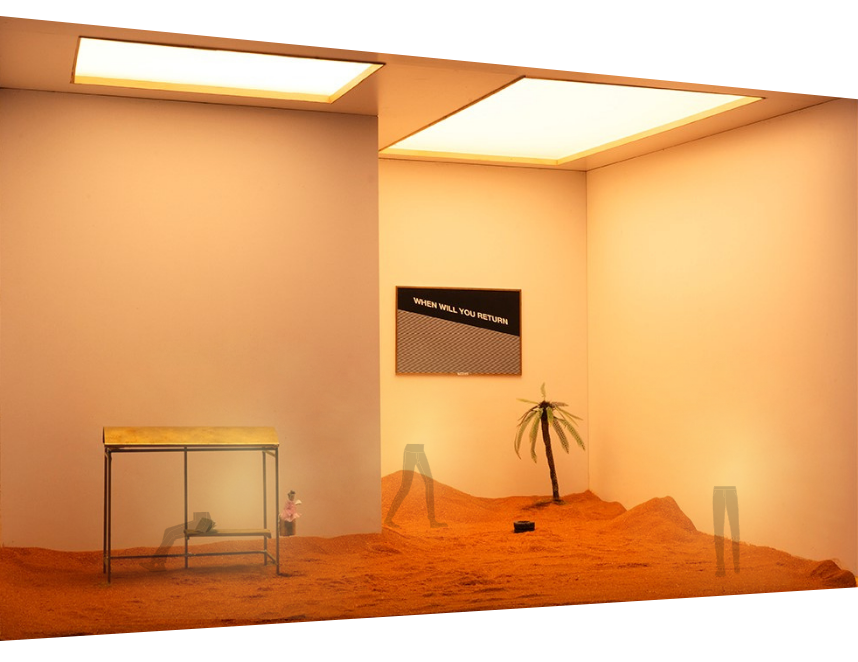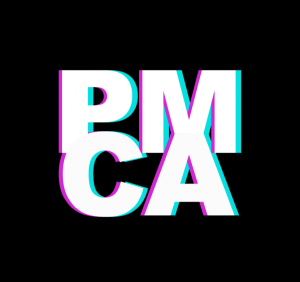The Scene
Sand. Everywhere up until the corners. Bright light lands on the red sand covering the floor creating an amber atmosphere. Left, in the front of the stage a bus stop, a booklet lying open on the bench, some papers pile out of the bin. Behind the stop a wall hiding the left side of the back wall of the stage. Right back a palm tree. On the back wall a canvas reads: ‘WHEN WILL YOU RETURN’. The recipient is already on stage, reading this, with it’s back turned to us. While the recipient starts discovering the space, the critic enters from (somewhere) behind the wall.
The critic: There you are! Thank you for coming. Well, for being here, already. No problem finding it I see. I went to the exhibition last week. I am very curious about your experience.
The recipient: Quiet. Peaceful. That question confuses me. nods to the back
The critic: Feelings?
The recipient: At first, yes. And no. Yes, the warmth, but no stimulus.
Walks to the booklet in the bus stop, turns some pages and sighs.
The critic: Thoughts? What are you thinking now, like, the things that pop into your… mind?
The recipient: This light, have you noticed? pause This light is lovely. At first, yes. But then pause, facing down at the sand under the feet I look for water but I don’t see it. Just sand. It’s not warmth, it is drought!
The critic: What a beautiful reaction to this place. Rich… and also very complex.
The recipient starts panicking, walking to the center of the stage.
The recipient: Thoughts, feelings, questions. Let’s get out of here. I want to go. breathing heavily This warmth is killing me. Could it kill me? There’s no life here, no water. The critic points at the well, constructed with two large tires Drinking water, yeah, for people. Buh! Not for plants. Where’s the greenery? It’s all gone! The critic looks at the recipient inquisitive and lifts arm to point again Fuck that palm. I need shade, real trees. The heavy breathing intensifies Doom…
The critic: That’s big. Are you escalating?
They now stand next to the well looking into the abyss. While the critic strokes the tires to investigate its texture the recipient’s glance disappears into the hole and the attention turns inwards. Dark places.
The recipient: Bare… Eerie… Lonely. Now that I think about it, pause. Slowly turning upward again, staring at nothing but in the direction of the bus stop I’ve been to this place before. I can see myself reading that book. On my boat, disconnected from the fast-paced reality. Floating, free.
The critic nudges the recipient from the well to the bench. Their pace is slow, not cautious but thoughtful, the eyes of the critic focussed on the recipient. When the recipient is seated, the critic breathes a full unwinding sigh and starts walking again.
The critic: But also alone! It seems like this place is made to come and go but I don’t see any of us coming and going. You were here before me. Floating around as if it is nothing. How did you get in?
Footsteps, no door, footsteps on sand: the curator.
The critic: Wow, we totally forgot the time.
The curator: It looks like the actors have left. Peeped around the corner.
Without leaving the bench the recipient proceeds.
The recipient: I enjoy the absence of others. It’s mostly other people that make me feel alone. I actually never thought one second about who has been here. And whoever has been here, did not stay long. I know it for sure.
The curator: I guess they will return soon. The adventure has yet to begin.
The critic: Last week I was here, passing by on my bike. There was a woman in the room behind this place. She saw me and smiled. So I smile-waved back at her. It is actually weird that we could never meet her in this place although the stage is set perfectly.
The curator: That phrasing! It is the very first time that I see this place as a theater decor. It opens new perspectives. Possibilities of the place.
Suddenly the recipient arises and with a raised voice:
The recipient: What do we eat here? What’s there behind that left wall? And is it even possible to leave?!
The critic: I wonder where the artist is. She out there? Could you maybe ask her if she wants to talk to me?
The Curator: You better call her yourself.
The critic walks up and down the stage. Looking behind the wall.
The recipient: It is no suggestion, we just should – not – be – here. Maybe it suggests that we shouldn’t be here. Are we able to leave?
While the critic decides not to give up looking for an entrance, the curator sits down next to the recipient.
The recipient: I’ve been here before, you know.
The curator: This place has been at my studio before.
The recipient: What?
The curator: The night before the artist had to put the things in order, I took this place to my studio.
The critic: Yells in the hope this will reach the artist somewhere I was wondering… uch. I was wondering if you wanted to back-and-forth a bit on your exhibition!? We hear her falling behind the wall Hello?
The curator: There she was. The artist lives in Groningen so she decided to install all the things herself. She stood before my door armed with all the ingredients and a spoon. Ladle. Everything was well thought and figured out. Up until the very end. Then she changed her plans.
The critic crawls through the sand from behind the wall. Still yelling, now with no clear direction:
The critic: I wondered… Where did that sand come from? Did the sand travel by your hands? What did you do with the grains and what does it mean? pause, sits down towards the canvas on the back wall Did you see how all this sand got into this bright space?
The curator: And the bus she brought, returned back home. The suggestion remains. Stands up, walks to the critic to explain After all, she doesn’t call herself a ‘suggestionalist’ for nothing. So yes, for the first time I saw someone decide on the most warm light this LED can provide. Nice how it enhances the orange color of the desert sand up to the point it involves the walls. A blistering void but also almost domestic, in contrast to the cold street out there. Squats down, runs sand through hand
The critic: On the one hand the warm color and the softness of this wavy surface is appealing, but I find it estranging too. I have trouble connecting to this place. Like I am not really here. I think I have a fantasy problem. It is because of the bus. It seems such a simple reference, a suggestion. Stop, bus, bus stop, bus. Do we know if it just left or that it’s coming?
All three start to look around, left and right, if the bus is near. By moving back and forth through the sand traces of their passing are formed. On the front of the stage, the critic stops for a moment. Earnest.
This quite impassable area would suggest to me that not many buses pass. I can imagine the bus but it is hard to put myself in here – believing the situation. It’s literally hard to move in sand, let alone for a bus.
The curator is the first to walk back to the bus stop. With hands on the knees the curator sits down in the center of the bench, leaving the hands attached to the knees.
The curator: The adventure has still to begin. I expect the actors will probably come back soon…
The recipient returns to the bench too, grabs the book and sits down left to the curator.
The recipient: Now that I think about it. I have been here before.
The critic watches them over the right shoulder, then turns around and walks towards the bench.
The critic: It’s hard to move.
The critic joins the curator and the recipient. They wait. Slowly the warm light dims leaving behind one hazy beam on the canvas.
Maartje Terpstra 2022


